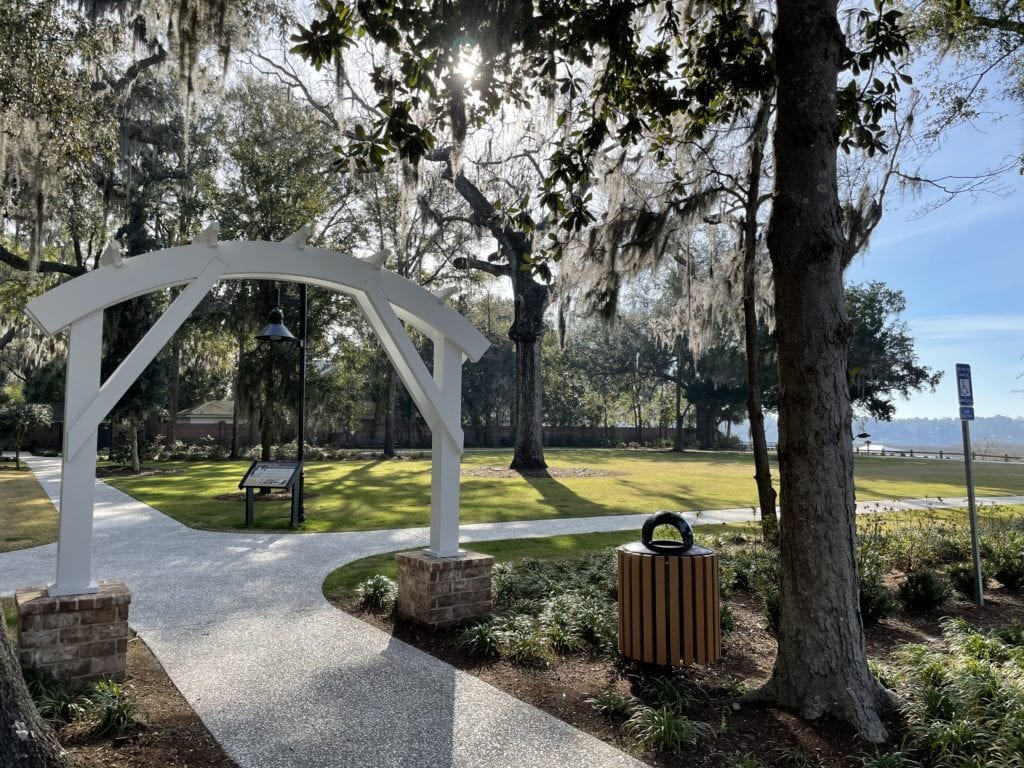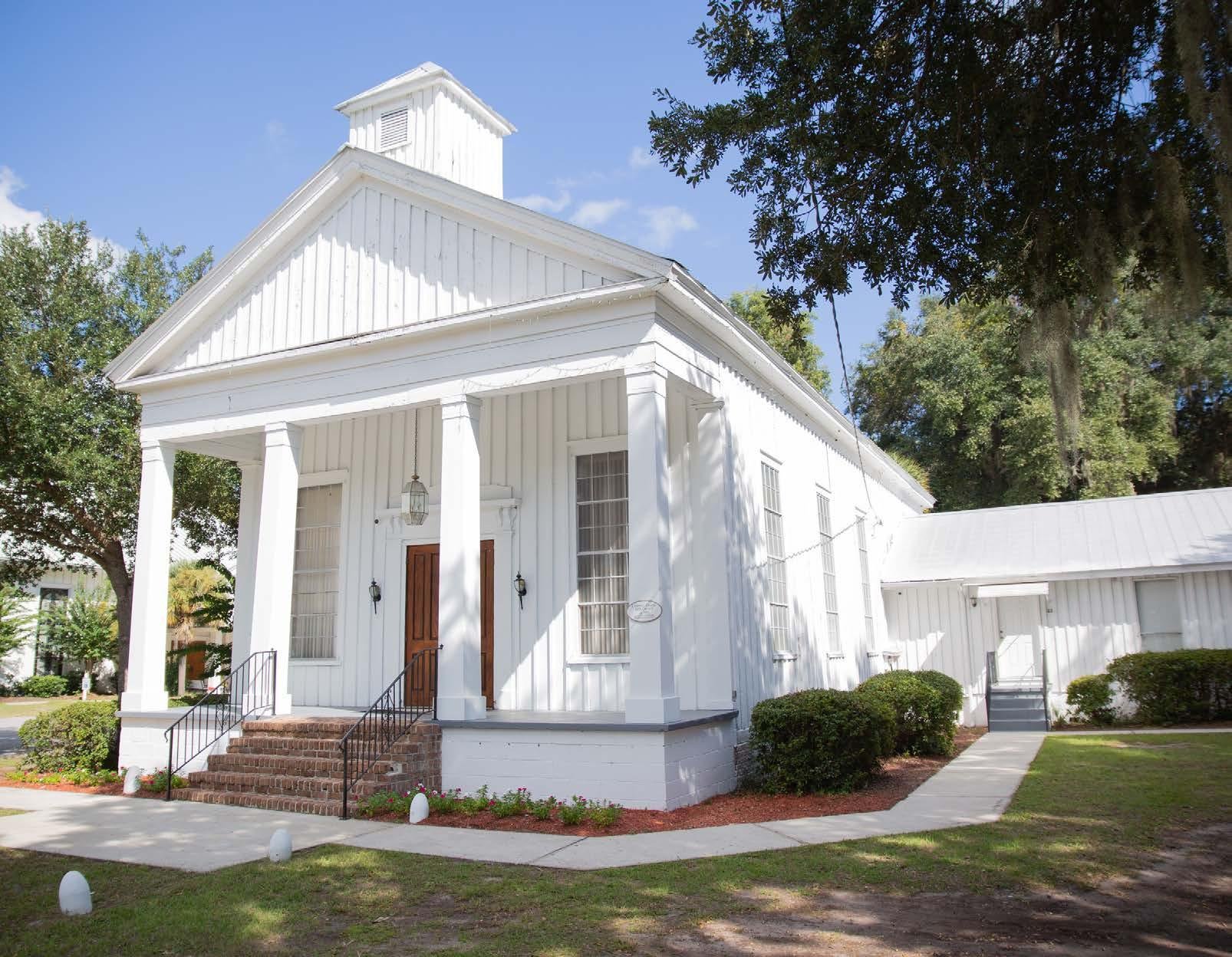
Cyrus Garvin - Historic Marker
Cyrus Garvin. Little is known of Cyrus Garvin's early life. He was likely born Into slavery, possibly on a plantation of the Baynard family. Garvin is notable for having established considerable status and property after emancipation. In 1858 he was acting as an agent or the Ephraim Montpelier Plantation. By 1870 he was farming 75 Acres and that number had risen to 100 and years later. In 1878 he acted as an agent for St Matthews Baptist Church helping them to acquire land in Bluffton.

M.C. Riley School - Historic Marker
Michael C Riley School this is the site of two schools that serve the black community in southern Beaufort County for most of the 20th century. Bluffton graded School, it's small framed building constructed about 1900, was followed in 1954 by an Elementary and High school named for Michael C Riley long time trustee for the Beaufort County School District number 2.

The Burning Of Bluffton - Historic Marker
The burning of Bluffton. Bluffton an antebellum Planters, summer Village was virtually abandoned by its seasonal and year-round and have a tent when Federal forces captured, Buford in Port, Royal in November of 1861 Confederate forces used it as an outpost to watch the Port, Royal sound and Charleston and Savannah are our early on June 4th 1863, an expedition of some 1,000 federals landed at Hunting Island Plantation, then marched in to Bluffton.

Bluffton, South Carolina - Historic Marker
Bluffton originally known as May River and later as Kurtz Bluff. Bluffton was settled as a resort town where Planters could escape the hot malarial summers of the Lowcountry Plantation, the streets were laid out in the 1830s and much of the early development, took place along Calhoun and Bridge Street. Bluffton South Commerce was largely a result of the river trade. Any Steamboat, Landing completed by the early 1850s serve to increase traffic and spur growth.

Campbell A.M.E. CHURCH - Historic Marker
The historic Campbell Chapel, A.M.E., built in 1853. It was originally Bluffton Methodist Episcopal Church organized by whites. The church’s 216 members in 1861 included 181 African Americans who were likely enslaved to its white congregates. The church caught fire during the Civil War but survived. By 1874, local freed people began worshiping there as African Methodist Episcopal A.M.E. Church, eventually known as Campbell Chapel.
